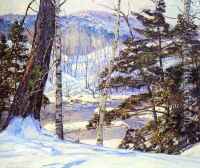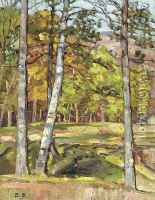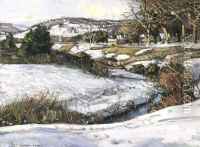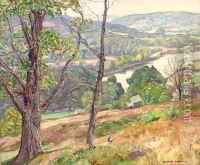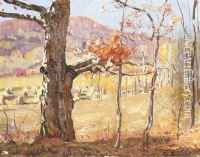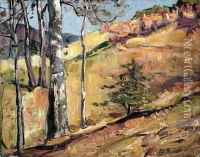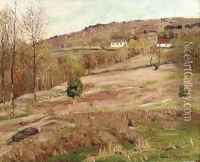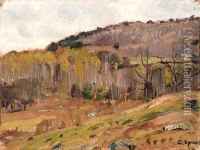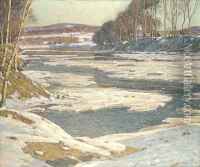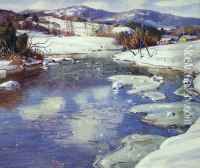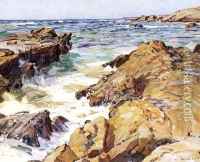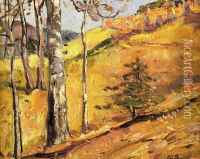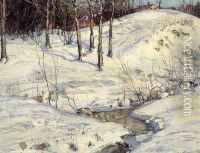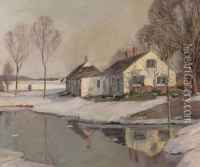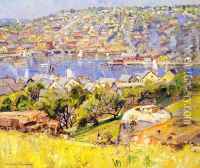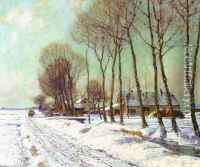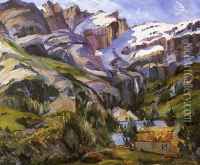George Gardner Symons Paintings
George Gardner Symons was an American landscape painter, born in Chicago, Illinois, in 1861. He became known for his impressionistic landscapes that often depicted the snow-covered hills of New England and the sunny vistas of California. Symons had a passion for the outdoors, which is evident in the way he captured the light and atmosphere of these varied environments.
Symons began his artistic training at the Art Institute of Chicago and later moved to London, where he studied at the Royal Academy of Arts. His time in Europe exposed him to the works of contemporary Impressionist painters, which greatly influenced his style. After returning to the United States, Symons continued to refine his technique and began to gain recognition for his work.
Throughout his career, Symons traveled extensively, drawing inspiration from his surroundings. He was particularly drawn to the rugged beauty of the American West and spent considerable time painting in California. Symons was a member of the California Art Club and participated in their exhibitions. He also exhibited his works at the National Academy of Design in New York and received numerous awards, including a gold medal at the Panama-Pacific International Exposition in 1915.
Despite his success, Symons remained dedicated to his craft and was known to be a prolific painter, often working outdoors to directly capture the effects of natural light. His paintings are characterized by bold brushwork and a vibrant palette, which helped to convey the dynamic and fleeting qualities of the landscapes he depicted.
George Gardner Symons continued to paint and exhibit his work until his death in 1930. Today, his paintings are included in the collections of various museums, including the Smithsonian American Art Museum and the Art Institute of Chicago, and he is remembered as one of the notable American Impressionists of his time.
